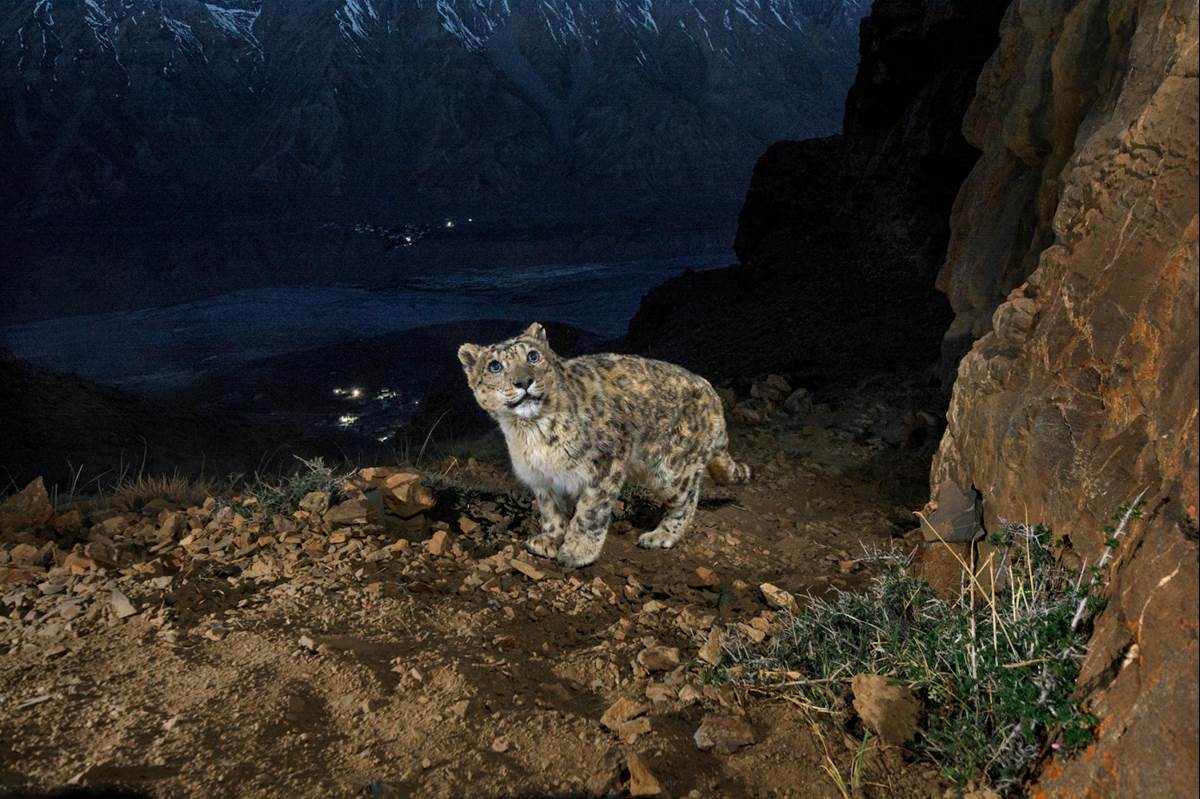The fifth season of Overheard at National Geographic kicked off this week with an expedition from nearly one year ago. Host Peter Gwin visits a small Himalayan town in hopes of seeing an elusive snow leopard in person in “Searching for the Himalaya’s Ghost Cats.” With the help of National Geographic Explorer Prasenjeet Yadav, Peter Gwin makes his snow leopard dreams become reality.
While in college, Peter Gwin was introduced to the book The Snow Leopard by Peter Matthiessen, who also captured the first photo of them. Twenty-five years would pass before more snow leopards would be photographed and it became a dream of Gwin’s to see one in the wild someday. That’s why he was so excited to visit Prasenjeet Yadav in the remote Spiti Valley of northern India.
Navigating a perilous single-lane cliff-side road no wider than a Jeep with snow and ice blanketing the terrain, Gwin and Yadav took the death-defying climb. Having grown up along the edge of jungles in India, the same forests that inspired Rudyard Kipling’s classic novel The Jungle Book, Prasenjeet Yadav knew what big cats smelled like. But when his explorations took him three miles above sea level in freezing temperatures, he had to get used to the altitude and climate before serious research could begin.
Scientists estimate there are between 3,500 and 7,000 snow leopards in the wild. Because they live in remote, high elevated areas, studying them is not easy. Further complicating efforts is the fact that they roam across twelve countries over 800,000 square miles of rugged terrain. But when Prasanjeet’s exploration led him to Kibber near the Spiti Valley where if you timed your visit right, you could increase your chances of a sighting.
The discovery of what is known as the “Snow leopard highway” made a perfect place to set up camera traps. One of the frequent big cats to stop by was named Kunkadar by Prasanjeet, which means “Cut ear” in his native language, an identifying feature of the male snow leopard. It’s believed to be him in a 2018 video taken in the region that shows a snow leopard falling a great distance with a blue sheep, one of their top prey, and surviving the tumble.
Speaking of prey, Kibber has a population of about 400, mostly farmers, and the locals were having problems with snow leopards hunting their livestock. In 1996, a scientist named Charu Mishra came up with a solution to the village’s problem, the previous solution leading to hunting and killing snow leopards. Charu set up an insurance program for farmers' livestock through which they would get paid if they lost livestock to snow leopards. Mishra is now the director of the International Snow Leopard Trust. The successful program made the rare big cats appear more frequently and over time, Kibber became known as the place to go if you were trying to see snow leopards.
In 2020, Kibber’s tourism revenue was $100,000 despite not having a single hotel. Tourists make arrangements to stay with locals, but the biggest concern now is sustainability and reducing ecological impact from tourism. Visitors produce a large amount of trash, which ends up being burned, so the region’s next big endeavor will be counteracting these new challenges.
Did Peter Gwin fulfill his wish of seeing a snow leopard in the wild on his trip to Kibber? He sure did, and it was none other than Kunkadar. They received word that a snow leopard had taken down a giant Ibex in a frozen river and they joined other tourists in watching him feast from a safe distance. The story has a bittersweet ending, with Prasenjeet Yada’s research trip cut short by the pandemic and later learning that Kunkardar had passed away. Villagers in Kibber held a cremation ceremony for him. But the silver lining is that camera traps recently captured footage of a mother with two cubs, believed to be Kunkadar’s descendents. The “Circle of Life” continues its never-ending refrain.
You can listen to this full episode and others at the official Overheard at National Geographic website.

